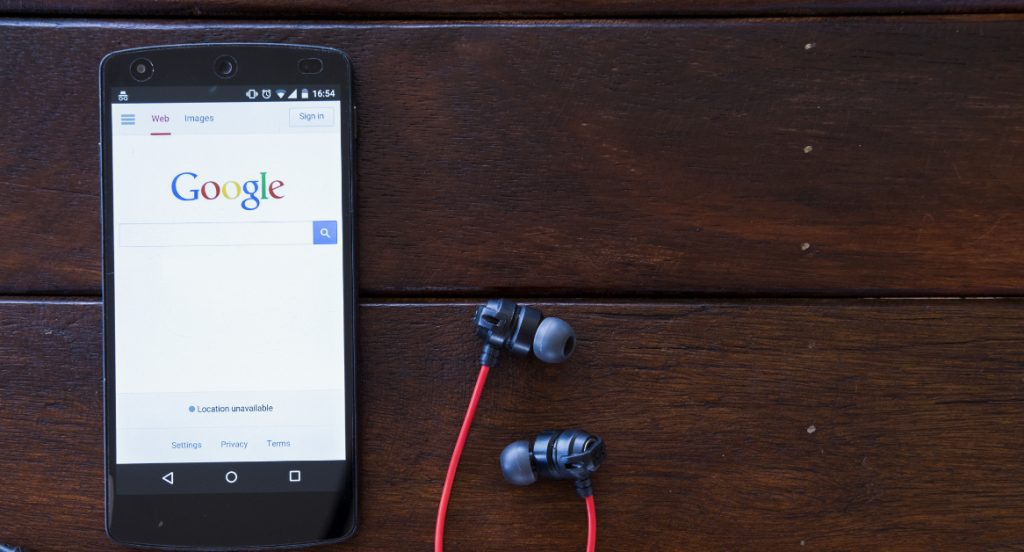13 Steps to Get on the First Page of Google (Start Today)
- January 3, 2018

How do you get on the first page of Google?
As time goes by we are seeing a huge rise in artificial intelligence (AI) in all industries. Google amongst other search engines are becoming a lot savvier when it comes to crawling websites to determine search engine rankings. To get your brands website to show up on page 1 of Google it just used to be a case of filling other websites with backlinks to your website and sometimes even using some methods now considered Black Hat methods. Although backlinks are still important, the quality of these links are more important than ever.
Google is now reading websites more and more like humans every week. As marketers, it is our jobs to code, write copy and build websites that are built both for the user but also for the search engines.
Our job is also to keep up to date with regular algorithm changes that are set out to reward the most user-friendly and relevant websites and penalise websites that aren’t.
So why all of this talk about user experience? Very often the finer details get missed out when building a website. As marketers, we want to see the most conversions possible and the way this will be achieved is through a great experience. Think about walking through an Apple store, how great does it feel being surrounded by beautifully displayed products? It is very enticing, the same should apply to your websites. From there, Google will recognise what users are feeling about your website and reward you accordingly.
Here is a roundup of what you need to know if you are serious about improving your user experience and ultimately your conversion rate.
1. Use Multimedia
The key to a good conversion rate is engaging the audience quickly. Using video and images a great way to do this. Getting the audience hooked in with video and images also helps to decrease the bounce rate on your website. This is a factor for Google when they crawl your website, they prefer websites with lower bounce rates because they think that users are finding it more useful so will reward you. With using videos, it will significantly increase the average visit duration which again shows Google users are interested in your website.
Quick Tip: When adding images, you must remember to provide an ALT tag and fill in a title tag for the image. Include the keyword you wish to target.
2. Write REALLY Good Copy
Write for the consumer, not just to tick boxes in search engines. Admittedly you do need to tick some mandatory backend boxes but on the front end you need to think user first.
Clear headings
Make all the headings are clearly set out, make sure you use the correct header tags for each point you wish to make. This not only makes it easy for your website to be read by the user but Google can crawl it easier and make sense of it quicker.
Include your target keyword a couple of times in first 100 words
For the benefit of the user and search engine, reassure them what the article is about by using the keyword a couple of times in the first paragraph or so. Do not overuse keywords as you will be seen as a spammer. Use variations of the keyword for example “web design” or “website design” Google is smart enough to pick up you are talking about the same keyword.
Use paragraphs
Make it easy for the user to read. If the user sees large chunks of words, they are likely not to even bother reading anything and just leave the page straight away.
Bold important information
Some users may not have enough time to read everything so making important information bold can help out the user a lot.
Bullet point
Bullet points are a great way to give bitesize pieces of information to your audience, keeping them on the page for longer.
Similar Keywords
When optimising your website, use similar keywords in your copy throughout. Google will not like over repeated words but the use of other similes is good.
Use internal/external links
Links to other articles whether it is your own website or others. It shows that the article is a well-formed article. Internal links help Google to understand the structure of your website and external links are used to show Google that you have used different sources while writing. From a human point of view, internal links within articles are great to navigate to other service/product pages they may not already know about or can’t find. From a human point of view in regard to external links, they will understand through association you know what you are talking about.
3. Write an Attractive Meta Description
Click through rate in search engines is a factor to how well your website does in ranking positions. Write something well optimised for keywords yet compelling and something that is too good not to click on.
Our go-to plugin for writing Meta Descriptions or writing any content for our website we must run everything through Yoast. It guides you to help you writing well-optimised content, it offers tips on your general SEO as well as your readability.
4. Avoid Popups
Picture this, you land on a page after looking at several other pages on the internet and you just want to find some information. The meta description looked good so you clicked the link and are expecting to find exactly what you want. THEN a popup springs up and has a tiny X in the corner that you can’t find and the popup blocks your whole website. Don’t use restrictive popups like that. Give the user what they want to see and then more whether it is down the side of the page, in a banner or in the text. Just don’t be too disruptive to the user, you need to nurture them first instead of throwing something down their throat before you have added any value.
5. Improve your Story Telling
If you are telling a story throughout your website, users will feel compelled to read on and navigate around your website. Build a relationship and build it strong.
6. Utilise a Quality blog
Apart from a blog being a great way to bring in traffic, blogs should become the go-to source of information when it comes to certain topics. The more useful the content, the more return customers. The more return customers, the more likely users are to share content. In summary, creating high-quality content is time-consuming BUT long-term strategies do pay dividends. When you are starting don’t expect 1000s of hits to your website and new leads battering your door down. Think more along the lines of “the 20 people that read my blog every week, how many people will they tell in the future” focus on giving so much value that your audience will HAVE to share.
When you post a blog, post it to all of your social media accounts which will encourage article sharing. Even though it is not the most used platform, be sure to still post on Google Plus, it is owned by Google and they want you to post on their platform and are likely to reward you if you post on there. Just simply add it in when you schedule posts on Hootsuite or Buffer.
7. The Three-Click Test
As a rule of thumb users, after landing on your homepage should be able to get to their final destination in three clicks or less. The more clicks, the higher drop-off. Make navigation as minimal as possible.
8. Responsive and Mobile Friendliness
It doesn’t matter what type of website you have, if you are not completely responsive to every screen size and device, you will be 1) penalised by Google 2) become a repellent for users on Google. No one wants to visit a website that can’t be viewed on the screen they are using.
Check to see if your website is responsive by using Google’s Mobile-Friendly Test.
9. Page Speed
This is another important ranking factor for showing up in search results. Slow websites will see a higher drop off rate if a user has to wait longer than a couple of seconds they are thinking of leaving the site – fact. There are things you can do to boost your sites speed such as:
- Leveraging browser caching
- Minifying CSS and JavaScript
- Optimising images
- Disabling plugins or deleting code that is not needed
Suggested Plugins:
Brower caching & minifying CSS and JavaScript – WP Fastest Cache
Optimising/Compressing images –Smush.it
Use P3 Plugin Profiler to find which plugins are taking up too much space and disable them (if not in use)
Once you have followed these steps, test to see how fast your website is. It is good to do a before and after measurement to see how well your website has done. Use Google’s PageSpeed Insights for the best analytics to find out how well your website has performed. Google give you suggestions on how you can improve the speed of your website, follow what they recommend until you get your score in the high 70s+
10. Make Forms as Short as Possible
Make everything as simple as possible for the users. When trying to push the user for information whether it is personal information for an email newsletter list or through a checkout process, make it as streamlined as possible. Focus on getting the details you need and get the extras afterward. It will put off a lot of users if the form asks too many questions.
11. Use Attractive Calls to Action Buttons
Be different. Stand out. Make your call-to-action button like no one else has seen before, use bright colours, clever copy and make it a noticeable size. Repeat the call-to-action button so the user knows how to do what you want them to do. Just be cautious about overusing the call-to-action.
12. Write Long Content
A survey conducted, stated that articles that ranked on the first page of Google tended to have 1,800+ words on them. The combined factors of all of the previously mentioned AND long content are a recipe for success. Google has a better chance, with more content to actually find out how relevant you are to search queries.
13. Check for Broken Links & Design Quality 404 pages
Hopefully, you don’t have any broken links, but if you do make sure that you have a 404 page that has links to redirect the user to either the homepage or the sitemap. You want to do everything you can to stop the user dropping off.
Check for broken links with the pluginBroken Link Checker.
Summary
Write, design and build your website with the user in mind first. Google is starting to crawl websites like humans would if they were robots. Spend the extra time with your website in testing and make sure all copy is written well.
Are you unsure or would like learn more about SEO? Read more of our SEO blogs
Contact Us
Cheshire (Head Office)
Manchester
Get in touch
Let’s find the best solution for your business



